(Brantôme 1885 - 1958)
Hondarribia, the door of Santa Maria
Gouache watercolor
H. 45.5 cm; L. 33 cm
Signed lower right
Robert Dessales-Quentin was born in one of the most beautiful villages in France: Brantôme, nicknamed the Venice of Périgord, since it is located on the banks of the Dronne, a river which has become a natural defense by encircling the town. This small town in the north of Périgord was the playground throughout the artist's life. At the age of four, he completely lost his hearing as a result of a treatment unsuitable for his intolerance to quinine, then unknown. His father, a notary from Brantôme, decides to send him quickly to Paris where he will study at the National Institute for deaf-mutes. Conscious of his artistic tastes, his parents enrolled him in the Jullian Academy, in the studio of the famous Jean-Paul Laurens. Man of taste and terribly attached to his land. Dessales-Quentin will easily orient himself towards landscapes rather than towards history painting to which his studies predestined him. It is in Périgord that he will return quickly and find his way in the representation of the local heritage. Castles, beautiful residences, churches or views of cities will be presented from 1909 at the Salon des Artistes Français in Paris. It is in watercolor that he will be most comfortable, even obtaining in 1928 a Great Honorable Mention at the Salon, a rare occurrence for this medium. In oil he will have several different periods and styles, in particular a period that we could call "wisteria", due to the recurring presence of this plant between the two wars in his paintings. Drawing teacher for more than fifteen years in the great Institution Saint-Joseph de Périgueux, and in his studio in the rue du Plantier, he was named by his students the "brilliant left-handed". It is also within this workshop that Dessales-Quentin welcomed the "all-Périgord" every year for an exhibition of his highly anticipated works. Used to old Périgord stones, he will not forsake "elsewhere". The Corrèze will be a land of recurring passage, but also the Basque Country, French and Spanish. He will exhibit in many French cities his works, traces of which we find very regularly through the well-known labels on the back of the watercolors and their original framing.
Hondarribia is not Dessales-Quentin's daily hunting ground. Nevertheless he extracts a powerful leaf from it, without a sky, full of the heat of the Basque sun which floods this alley. The small Périgord watercolors, representing a church or a castle to please the locals, are far from this success. The door of Santa Maria that the painter represents, is in the south of the city, surmounted by the coat of arms of the city (which one does not see on the watercolor). At the end of the street, the golden silhouette of the beautiful Notre Dame de l'Assomption et du Pommier church stands out.



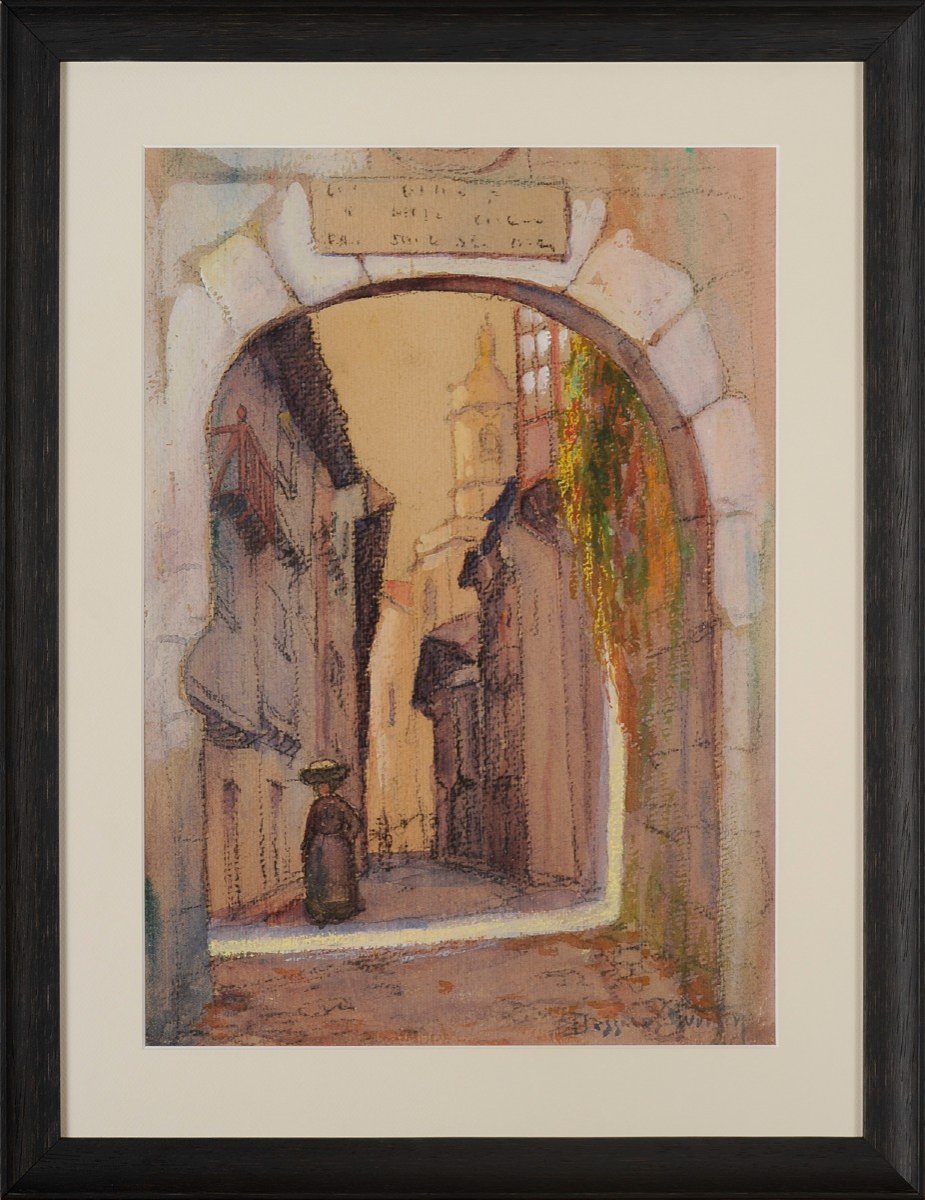
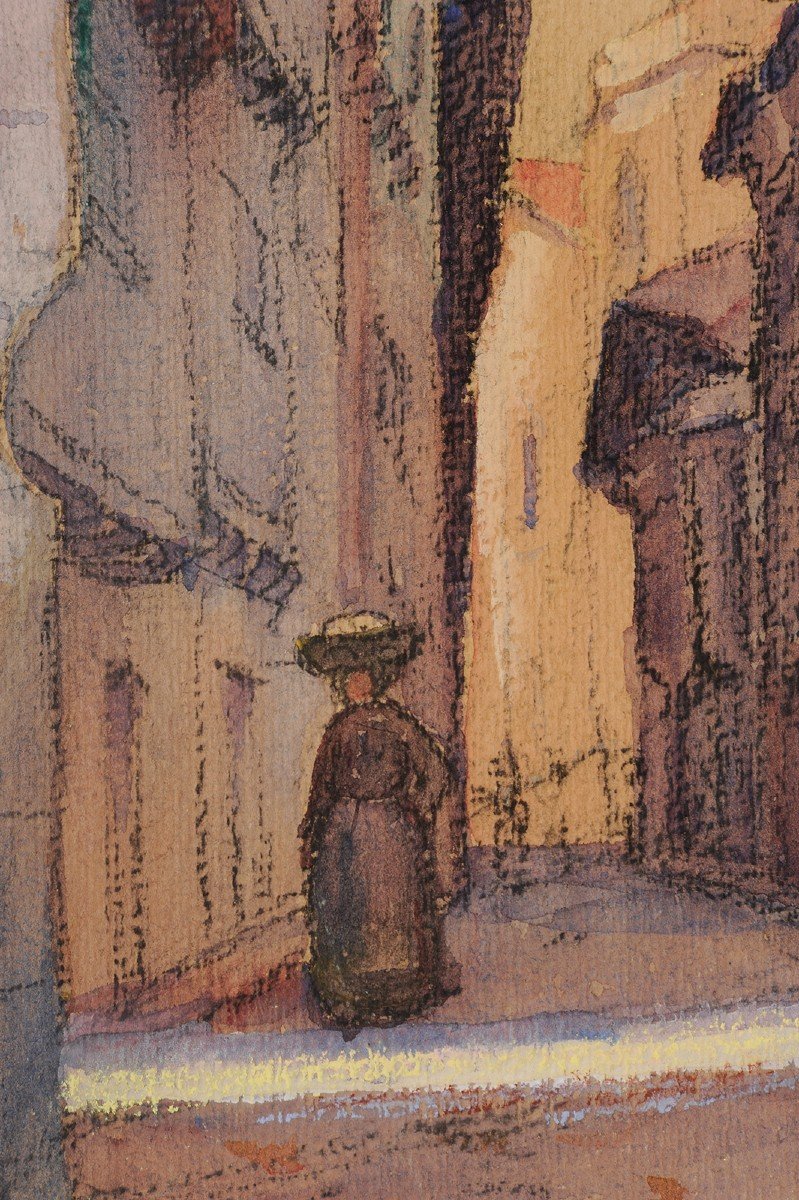


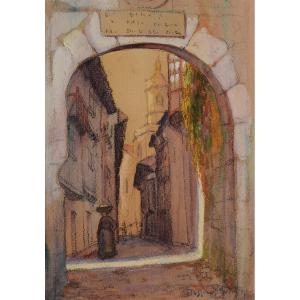






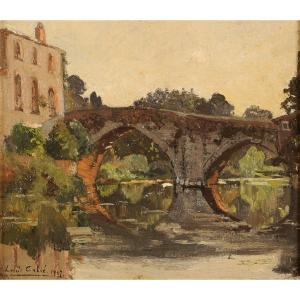

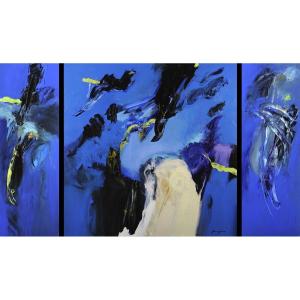
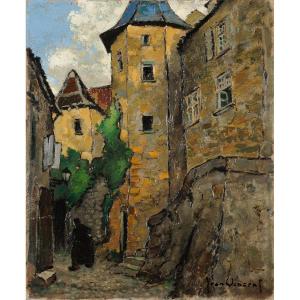

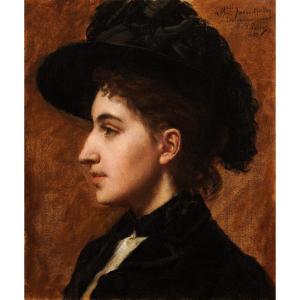


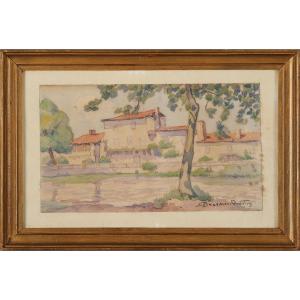
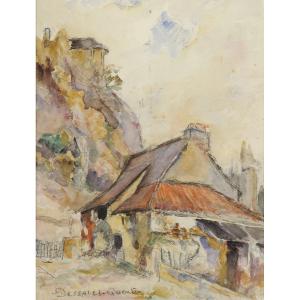
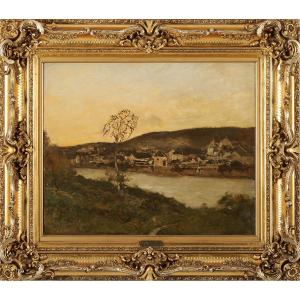

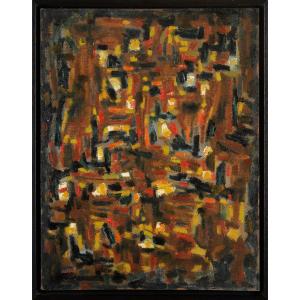
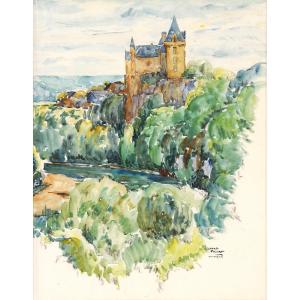
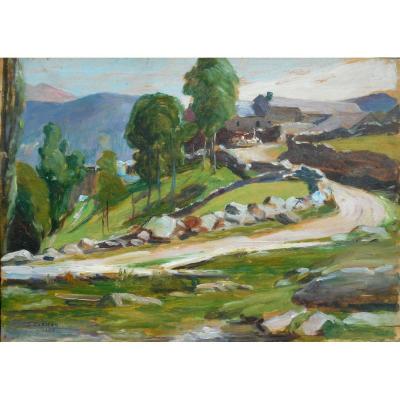
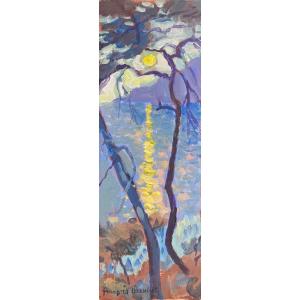
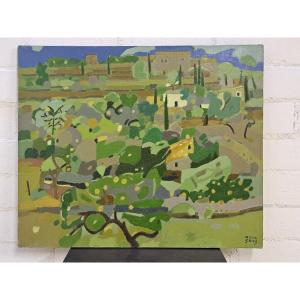
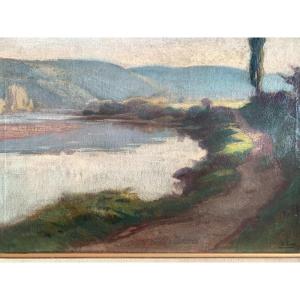
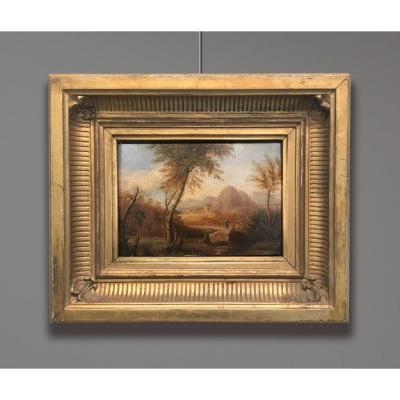



 Le Magazine de PROANTIC
Le Magazine de PROANTIC TRÉSORS Magazine
TRÉSORS Magazine Rivista Artiquariato
Rivista Artiquariato